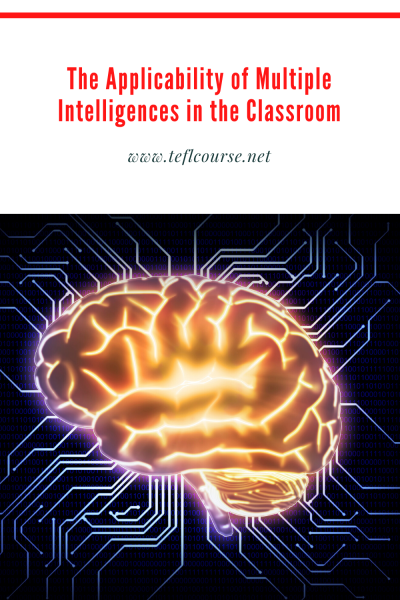The Applicability of Multiple Intelligences in the Classroom

The concept of multiple intelligences was brought to the education field by Howard Gardner in his book ‘Frames of Mind: The Theory of Multiple Intelligences.’ It is one of my favorite theories that I learned about while in university and I was fortunate to attend a speech for teachers by Gardner regarding multiple intelligences. It is a theory that I applied to lesson plans, most notably for my preschool and kindergarten students to reach all of the students in some meaningful way. Teachers can employ activities and assessments that are multi-faceted and address the needs and skills of the various students.
This post was written by our TEFL certification graduate Melissa G. Please note that this blog post might not necessarily represent the beliefs or opinions of ITTT.
MI Theory
Firstly, the multiple intelligences concept refers to the notion that there is more than one way to view ‘intelligence’ and is now applied in teaching to instruct students with various abilities. More oftentimes than not, there is a strong focus on linguistic-verbal and logical-mathematical (think standardized testing). However, this greatly depreciates the value of other ‘intelligences’ such as visual-spatial, interpersonal, intrapersonal, bodily-kinesthetic (unless sports stars), musical, natural and now existential. In school and real-life, there is an association that linguistic-verbal and logical-mathematical skills equate to intelligence and the others are relegated to just abilities.
Also Read: Can I teach English abroad without a work visa?
The Importance of Communication
As teachers, it is essential that we can communicate effectively with our students. Sometimes it is not possible to incorporate all of these into lessons but it is important to include a few. In addition to acknowledging various students’ strengths, it can also help to develop the skills of the students in more than one or two areas. These can be covered with students of various ages (from young children to adults).
When teaching a topic to students, you can incorporate these abilities into your lessons. For example, when I taught the present continuous tense to fourth grade English Language Learners we did not only just go over the tense through speech and worksheets, but they were able to take a much more active approach to their learning. The coursebook materials provided a CD with several songs that included the present continuous, which we played aloud and sang. We also added activities like charades for “What is he/she doing?” for bodily-kinesthetic. For a culminating project, the students worked on skits, in which they designed a space in the classroom with drawings and furniture, collaborated, and acted out a skit focused on the present continuous.

Also Read: Are online TEFL courses valid?
Benefits for Teachers
Furthermore, being cognizant of multiple intelligences and learning styles can help a teacher more successfully reach his or her students (both in an ESL setting and an ordinary school setting). In teaching English Language Learners, instead of just testing several concepts on a test or paper, it is best to work on and address other skills as well. This can take place in self-reflections (intrapersonal), debates, skits, role-play (interpersonal), movement exercises (bodily-kinesthetic), songs and poems (music), logical problems (logical-mathematical), create art or cartoons (visual-spatial), or discussions and activities relating to environment and pollution (naturalistic).
Do you want to teach English abroad? Take a TEFL course!
In conclusion, the multiple intelligences theory can help teachers (as well as others) recognize what others can bring to the table. It can mix up lessons so that they are not repetitive and make learning an exciting experience.
Apply now & get certified to teach english abroad!
Speak with an ITTT advisor today to put together your personal plan for teaching English abroad.
Send us an email or call us toll-free at 1-800-490-0531 to speak with an ITTT advisor today.
Related Articles:
- Top 10 Mistakes to Avoid in the Classroom While Teaching English Abroad
- The 5 Most Common Types of EFL Students and How to Deal with Them
- 5 Reasons to Take a TEFL Course Right Now - Even If You Are Not Leaving Yet
- 3 Steps for Dealing with a Student with Challenging Behavior
- The 10 Most Common Types of EFL Teaching Jobs
- 5 Simple Tips to Improve Your Classroom Management Skills




